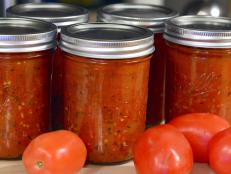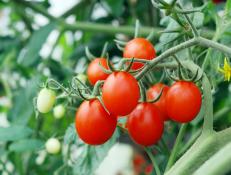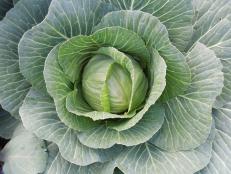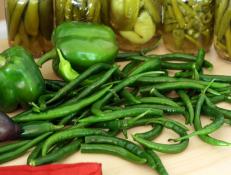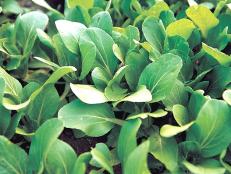Asparagus Two Ways

Image courtesy of Whole Foods Market
Asparagus is known to play hard-to-get, often taking a few seasons before those tender shoots break through the soil in the spring. But once they do, this rare perennial in the vegetable world has been known to produce for decades.
How you treat it in the kitchen is just as important as all the love, care, sun and water you gave it outside. Here are two recipes to try this spring when those slender stalks make their appearance.
Lemony Asparagus Salad
"This elegant, no-cook asparagus dish features raw asparagus shaved into thin ribbons and tossed in a sweet-tangy dressing," says Heather Olsen, healthy eating and green mission specialist from Whole Foods Market in Jacksonville, Florida. "The three-ingredient dressing is fantastic paired with any salad recipe, and the fresh herbs provide brightness and micronutrients galore!"
Serves 6
- 1/3 cup finely chopped shallots
- ¼ cup lemon juice
- 1 teaspoon Dijon mustard
- 1 teaspoon honey
- 1 pound asparagus
- 2 tablespoons finely chopped fresh mint
- 2 tablespoons finely chopped fresh parsley
In a large bowl, whisk together shallots, lemon juice, mustard and honey. Trim root ends of asparagus and discard. Cut asparagus tips off spears and add to the bowl with shallot mixture. With a vegetable peeler, shave asparagus spears into thin ribbons, adding shallot mixture as you go.
Add mint and parsley and toss salad until combined.
Pickled Asparagus
At Miller Union in Atlanta, Georgia, chef Steven Satterfield "puts up" his asparagus with a spicy mix of chile de arbol, allspice berries and brown mustard seeds.
Yields one quart
- 3 shallots, peeled and thinly sliced
- 2 dried chile de arbol
- 1 tablespoon black peppercorns
- 1 tablespoon allspice berries
- 1 teaspoon anise or fennel seeds
- 2 teaspoons brown mustard seeds
- 2 pounds asparagus, trimmed
- 2 cups white vinegar
- 2 cups Champagne vinegar
- 4 cups water
- ¼ cup kosher salt
- 2 tablespoons granulated sugar
Prepare a one-quart jar for canning by sterilizing the jar and lid in a hot water bath. Keep hot.
Place shallots, dried chiles, black peppercorns, allspice berries, anise or fennel seeds and mustard seeds into the sterilized jar. Gently add the asparagus into the jar and fill it until they are tightly packed, taking care not to damage the spears.
To create the brine, combine the white vinegar, Champagne vinegar, water, kosher salt and granulated sugar together in a medium-sized pot and bring to a boil. Pour the boiling hot brine into the jar, leaving 1/4 inch headspace at the top of the jar to create a vacuum. Wipe the mouth of the jar off if any brine splashed onto it during filling, and place the seal on top. Screw on band until finger tight and then turn the jar upside down for five minutes, while still hot. Return right side up and allow to cool until seal is formed.
Allow to sit for at least one week or more before serving. Refrigerate after opening.






